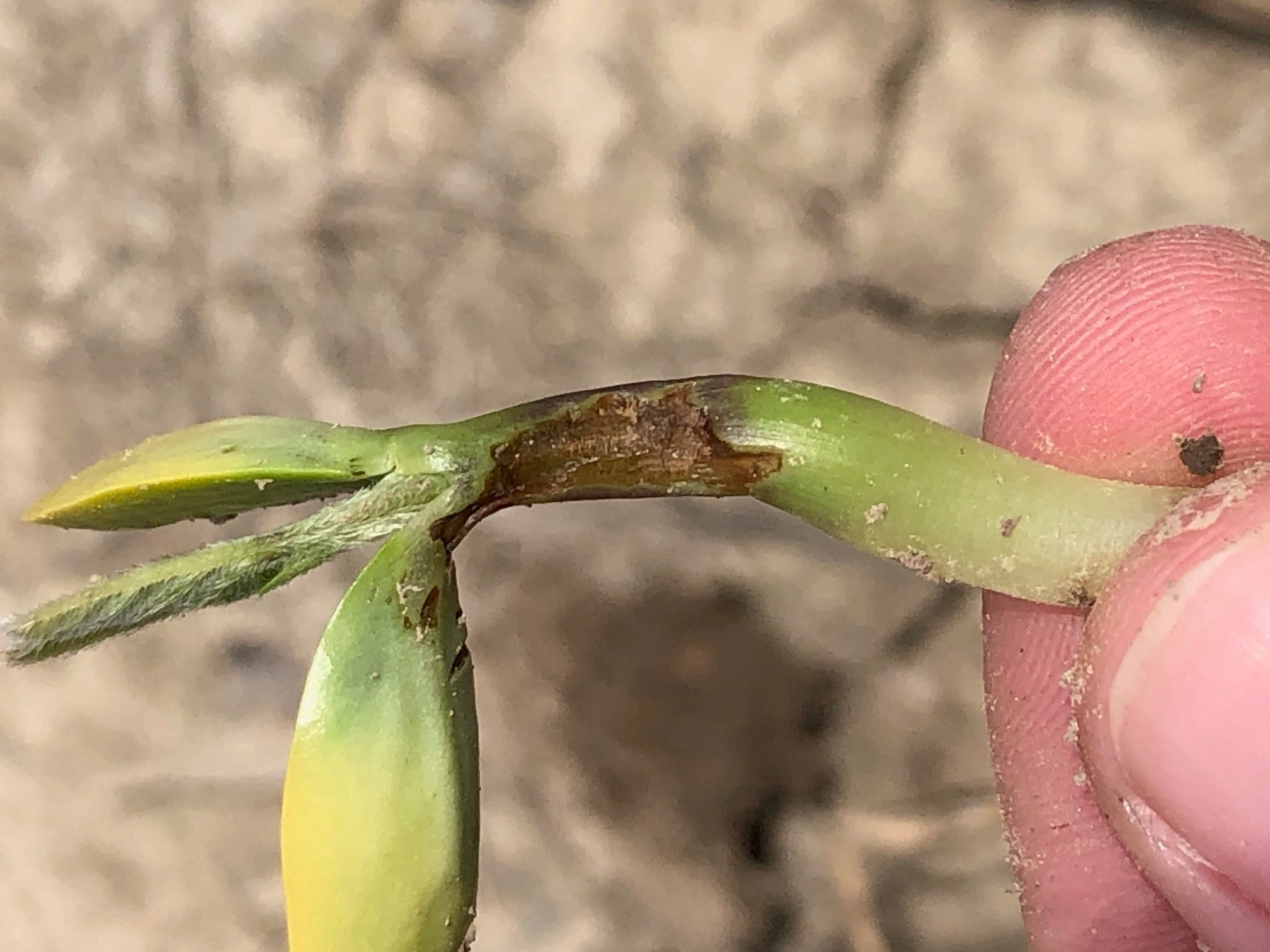 Pythium (GROWMARK, Inc.)
Pythium (GROWMARK, Inc.)
- Cool temperatures slow soybean emergence, growth and favor damage by herbicides, pests, and pathogens
- Herbicide damage is usually cosmetic, but seed corn maggot and seedling diseases can be damaging
- Scout fields now to assess damage and identify potential issues
This spring has not been kind to us in many parts of the Midwest, with cool temperatures affecting many fields. Now is a good time to be out checking fields and assessing these issues. Let’s talk about what to look for as far as the impacts of cool temperatures on PPO damage, insects, and diseases are concerned.
Cool conditions favor damage by several herbicides, especially those with a PPO active ingredient (Group 14). Examples include sulfentrazone and flumioxazin. Typically, we see injury when there is a short window between application and planting because the herbicide concentrations are higher near the emerging seedling. In addition, cool temperatures can stress the emerging plant and reduce its ability to metabolize these herbicides, resulting in additional damage. Look for burning of the cotyledons and hypocotyl, distorted leaves, and stunting. It is rare to see PPO damage kill seedlings, but plants damaged at the hypocotyl may be more prone to stem splitting and breakage.
Seed corn maggots (SCM) develop after adult flies emerge from dormancy and deposit eggs in fields. Most often these are early-planted fields recently worked or manured, as adults are attracted to decomposing tissues. Non-treated seeds and seeds setting in soil for an extended period also tend to have issues. Eggs hatch and maggots feed on seeds and seedlings. In parts of southern Illinois and Iowa, the first-generation adults, which are the ones that cause the issues in our fields, have already emerged, laid eggs, and those eggs have hatched into maggots. It is not likely that damage from a PPO herbicide or frost caused the adults to lay eggs in fields. Rather, it is far more likely that both issues are being observed due to conditions that favor both issues at the same time. Look for small yellow maggots that look like grains or rice with black ends. Typically, you will observe blanks and stunted or dying plants- dig these up and check for larvae. Seed fed on by SCM will die, and there are no rescue treatments.
Cool season diseases include Pythium seed rot, and sudden death syndrome (SDS). It is very difficult to tell these diseases apart early on, and multiple diseases can be present at a given time. Pythium root rot is favored by wet conditions and cooler soil temperatures tend to result in more significant stand reductions and root rot issues. Pythium infection results in a rotting of the outer root tissues leaving the inner tissues healthy. If you carefully dig out the seedlings from the soil and run the roots between your fingers, the outer cortex will easily slough off causing a, “rat tailing” symptom. This differs from severe infections with the SDS pathogen, which causes a more extensive rot that will turn roots black and kill feeder roots. Seedlings that escape severe infections of roots early on can still be infected by the SDS pathogen, which will remain in the roots until pod set, at which time alternating wet/dry periods can result in a toxin being produced by the fungus and moved into the foliage. The accumulation of this toxin in the foliage can damage and kill green tissues and potentially defoliate plants. Often, seedlings severely affected by these diseases will occur in poorly drained areas of the field. Look for skips in the row and areas of the field with emergence issues, plants dying soon after emergence, or stunted plants. Non treated seedlings will also be more prone to issues. Remember that early season Pythium is suppressed by specific fungicide active ingredients, such as metalaxyl and ethaboxam, whereas fluopyram and pydiflumetofen are the most effective for suppression of SDS.